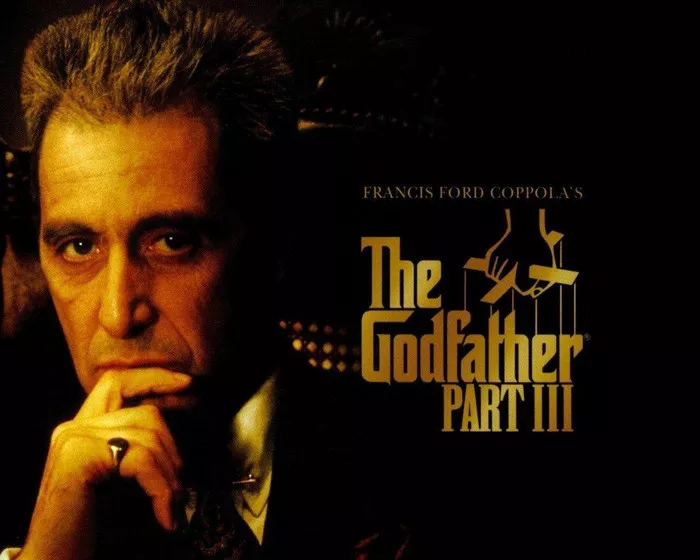In the realm of cinematic storytelling, few conclusions resonate as powerfully as the ending of “The Godfather,” a film that has etched itself into the annals of cinematic history. As audiences reflect on the Corleone family saga, a pivotal question surfaces—How Did The Godfather End? This exploration embarks on a journey through the closing moments of this cinematic masterpiece, dissecting the narrative choices, character arcs, and the lasting impact that lingers in the minds of viewers long after the credits roll.
The Climactic Culmination: A Symphony of Closure
1. Michael Corleone’s Ascension: The Closing Image
The Godfather’s final act centers on the transformation of Michael Corleone (Al Pacino) from a reluctant heir to the ruthless head of the Corleone crime family. The film concludes with the iconic closing shot of Michael sitting alone as he assumes the role of the family patriarch. The cinematography, coupled with Nino Rota’s haunting score, encapsulates Michael’s isolation and the heavy burden of his choices.
2. Kay’s Revelation: A Shattering Truth
The Godfather’s ending is punctuated by a revelation that leaves audiences stunned. Kay Adams (Diane Keaton), Michael’s wife, confronts him about his involvement in orchestrating the murders of his rivals, including his brother-in-law, Carlo Rizzi. The revelation exposes the dark depths to which Michael has descended, casting a shadow over the seemingly serene façade of the Corleone family.
Analyzing the Enigmatic Final Scene: Door Closes, Lives Unravel
1. The Symbolism of the Closing Door: A Barrier to Redemption
The film’s closing scene features a literal and metaphorical closing of the door, shutting out the investigative gaze of Kay and signifying the impenetrable barrier that separates Michael from redemption. The closed-door becomes a visual metaphor for the closed-off nature of Michael’s soul, now fully committed to a life of crime.
2. The Ominous Undertone: A Foreboding Future
As the door closes, the undertone of the final scene suggests a foreboding future for the Corleone family. Michael, now fully entrenched in the world of organized crime, sits alone, contemplating the consequences of his actions. The silence that follows amplifies the weight of the choices made and sets the stage for the tumultuous events that will unfold in the sequels.
Impact on Pop Culture: The Godfather’s Reverberating Finale
1. Iconic Quotes: “Just When I Thought I Was Out…”
The Godfather’s ending gave rise to one of the most iconic quotes in cinematic history: “Just when I thought I was out, they pull me back in.” Uttered by Michael Corleone in “The Godfather Part III,” this line encapsulates the inescapable nature of the Corleone family’s criminal legacy and has become a catchphrase that resonates far beyond the confines of the film.
2. Homages and References: A Cinematic Touchstone
The film’s conclusion has been paid homage to and referenced in countless other works of art. Whether in parodies, tributes, or subtle nods in various forms of media, The Godfather’s ending remains a touchstone that continues to captivate filmmakers and storytellers across genres.
Cultural and Cinematic Legacy: The Godfather Lives On
1. Influence on Filmmaking: Pioneering Cinematic Endings
“The Godfather” set a precedent for cinematic endings, demonstrating the power of ambiguity and leaving certain elements open to interpretation. The film’s impact is visible in subsequent works that have drawn inspiration from its narrative choices and thematic richness.
2. The Godfather Part III: A Continuation of the Saga
While “The Godfather” concluded in 1972, the story of the Corleone family continued in “The Godfather Part III” (1990), exploring the consequences of Michael’s choices and the elusive quest for redemption. The third installment further solidified the legacy of The Godfather and provided closure to some lingering questions.
Conclusion: The Godfather’s Enduring Enigma
As we unravel the enigmatic ending of “The Godfather,” it becomes clear that the film’s conclusion is more than a closing scene—it’s a profound exploration of power, morality, and the indelible impact of choices. The Godfather doesn’t neatly tie up its narrative threads; instead, it invites viewers to grapple with the consequences of Michael Corleone’s journey.
The closing door, the haunting music, and the revelation to Kay all contribute to the film’s enduring legacy. The Godfather’s conclusion is not a finite endpoint but a doorway to contemplation, discussion, and interpretation. The film’s influence extends far beyond its runtime, leaving an indelible mark on the cinematic landscape and inviting audiences to reflect on the timeless themes it explores.
In the ever-evolving tapestry of cinema, “The Godfather” stands as a testament to the art of storytelling, where the ending is not a destination but a starting point for introspection and continued exploration. The Godfather’s enigmatic conclusion, like the echoes of a haunting melody, continues to resonate—a timeless reminder that some stories are not meant to end but to linger, inviting audiences to revisit and rediscover their depths with each passing generation.

